Rolandgarros.com invites you to experience the 2020 tournament on the original dates by looking back at some of the most memorable matches from the past, round by round. Today, Sunday June 7, we look back to 1984 and one of the most memorable finals of all time, when Ivan Lendl came from two sets down to beat John McEnroe for his first Grand Slam title, denying the American what would have been his first Roland-Garros crown.
One day, one epic match: Lendl - McEnroe (Final 1984)
Relive the legendary final between Ivan Lendl and John McEnroe at Roland-Garros 1984
 ©Regis Sirvent / FFT
©Regis Sirvent / FFTThe context
McEnroe and Lendl had been swapping the world No 1 ranking for much of the past year but though the American held top spot as Roland-Garros began in 1984, he was not an overwhelming favourite for the title, thanks to his lack of love for the clay.
McEnroe had only played at Roland-Garros four times before, with two quarter-final runs his best efforts. By contrast, Lendl loved the mud and had already reached the final, in 1981, when he lost to Bjorn Borg in five sets.
But McEnroe had three reasons to believe this could be his year. First, he arrived at Roland-Garros unbeaten in 1984; second, he had beaten Lendl in their past four encounters, including twice on clay in the previous month. And third, because while he already owned five Grand Slam titles, Lendl was still chasing his first, having lost all four of his slam finals, leaving many to question whether he had the mental strength required.
Both men had reached the final for the loss of just one set; McEnroe to Jose Higueras in round four and Lendl to Andres Gomez, a future champion, at the same stage. Opposites in playing style and personality, it was no secret that the two men disliked each other, which merely added to the occasion.
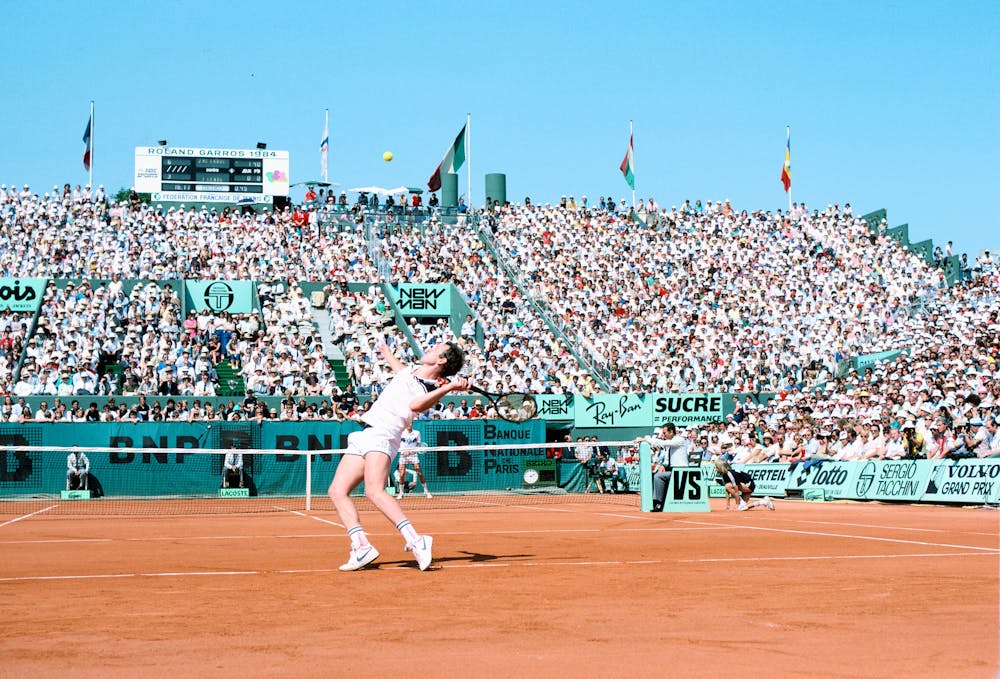 ©FFT
©FFTThe match
For two sets it looked as if McEnroe would cruise to his first Roland-Garros title. In front of a crowd that admired his attacking style, the American served and volleyed brilliantly, picking off Lendl’s passing shots at the net and then, on the Czech’s serve, taking his returns early and rushing Lendl into mistakes.
Time and again McEnroe would find himself at the net with a volley into the open court and as the 25-year-old, at the peak of his powers, took the first set 6-3 and the second 6-2, there seemed no way Lendl, even with his huge power and steely belief, would get back into the match. McEnroe’s speed and touch at the net was too much.
But with McEnroe known perhaps as much for his temper as for his tennis, there was always a chance he might go off the rails and though he had kept his cool in the first two sets, it only took a spark for the whole match to turn on its head.
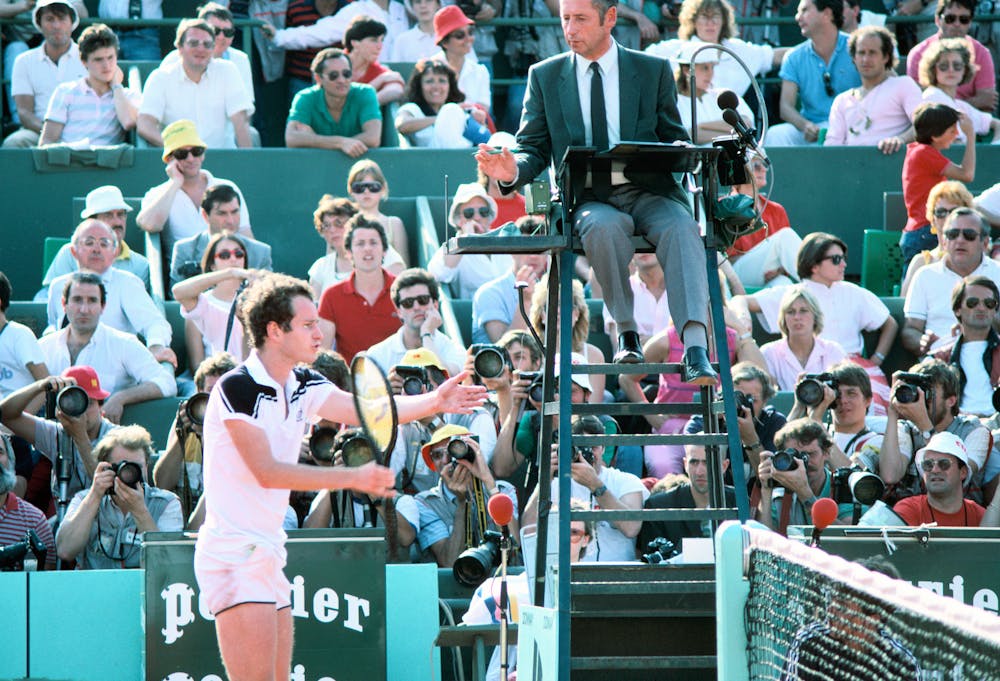 ©FFT
©FFTIn the authorised biography, McEnroe, published in 1990, author Richard Evans suggests that the burning sun, which had sped up conditions in his favour, was partly responsible for the change. Lendl, fit as a fiddle, could handle it, he said. McEnroe couldn’t.
Whatever the reason, the turnaround began early in the third set when McEnroe lost his cool. The American was angry at noise coming through the earpiece of a cameraman and at 1-1, and 0-30 up on Lendl’s serve, he marched over to the cameraman and yelled into his earpiece.
Lendl, reprieved, sensed his chance. A brutal forehand pass gave him a break of serve for 4-2 in the third set and though McEnroe broke back, Lendl broke him again to take the set 6-4.
McEnroe’s antics had riled the volatile Roland-Garros crowd and as Lendl’s confidence grew and as fatigue began to set in, the potency of the American's serve slipped. From winning more than 90 percent of points on first serve in the second set, suddenly he was down in the 60s and under pressure. But he still had a golden chance, breaking to lead 3-2 in the fourth set with a backhand winner and then extending his lead to 4-2.
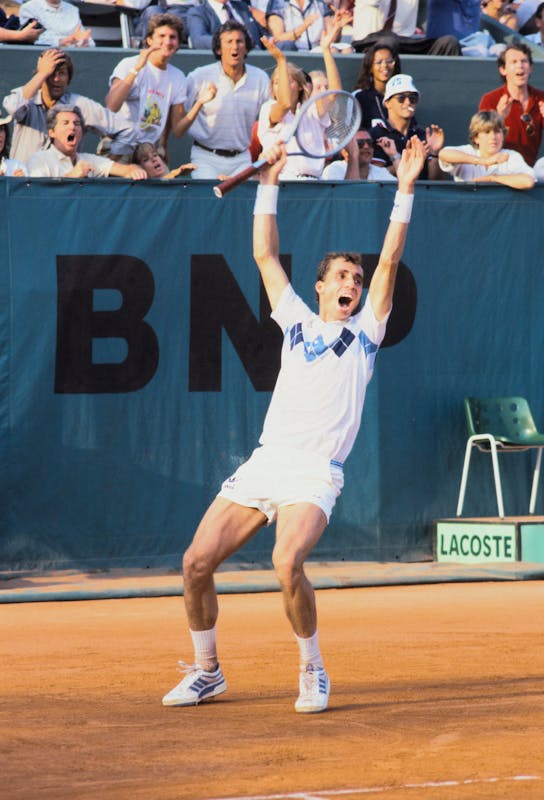 ©Regis Sirvent / FFT
©Regis Sirvent / FFTAt deuce on the Lendl serve in the next game, he was close to breaking again but this time Lendl stayed strong, holding his own serve and then breaking McEnroe to level at 4-4, before doing so again with a couple of brilliant shots to win the fourth 7-5 and force a decider.
The final set was just as tight and McEnroe had two break points to lead 4-3 but couldn’t take them. That was his last chance as Lendl snatched the break he needed in the 12th game to clinch a famous 3-6, 2-6, 6-4, 7-5, 7-5 victory.
What they said
“If someone had handed McEnroe a gun, he may well have shot himself,” Evans wrote. McEnroe rued his missed opportunities. “I couldn't ask for any more chances,” he said. Even years later, McEnroe still finds it hard to talk about "the one that got away", saying it still sometimes wakes him with a sweat.
Lendl was ecstatic at finally winning his first Grand Slam title. ''It feels great to answer different questions,” he said.
Match stats
Having hardly got near the McEnroe serve in the first two sets, Lendl broke McEnroe nine times in the next three.
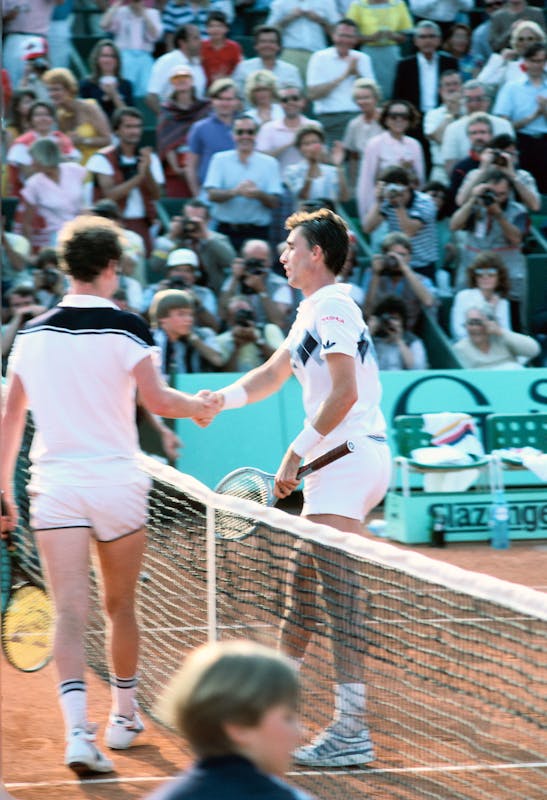 ©FFT
©FFTWhat happened next ?
McEnroe rebounded quickly to win his third Wimbledon title, his 6-1, 6-1, 6-2 victory over Jimmy Connors in the final considered by many to be the single best performance by anyone in a Wimbledon final. He crushed Lendl a couple of months later to win the US Open and ended 1984 as the world No 1, having won 82 of his 85 matches, by far the best year of his career. His US Open victory, though, was the last of his seven Grand Slam titles and though he remained in or around the world’s top 10 for much of his remaining time on Tour, he failed to reach another slam final. He retired in 1992.
Lendl’s victory at Roland-Garros opened the floodgates and over the next six years, seven more Grand Slam titles followed, including two more at Roland-Garros, in 1986 and 1987. His total of 94 singles titles is third in the all-time list behind Jimmy Connors and Roger Federer and he topped the world rankings for 270 weeks in all.
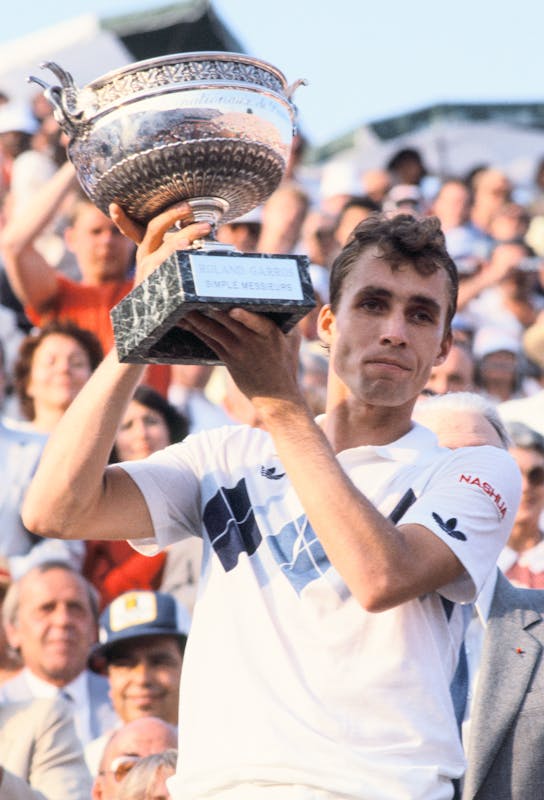 ©Regis Sirvent / FFT
©Regis Sirvent / FFT ROLAND-GARROS
19 May - 8 June 2025
ROLAND-GARROS
19 May - 8 June 2025



